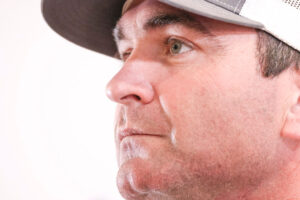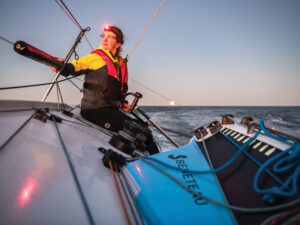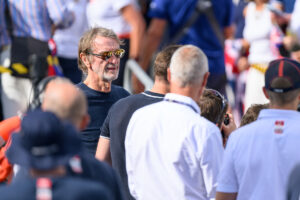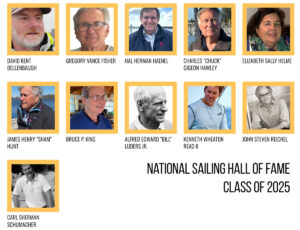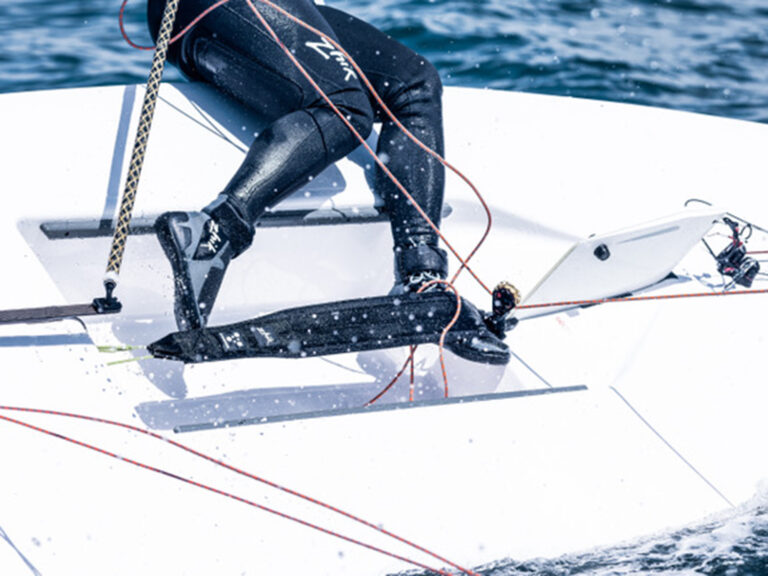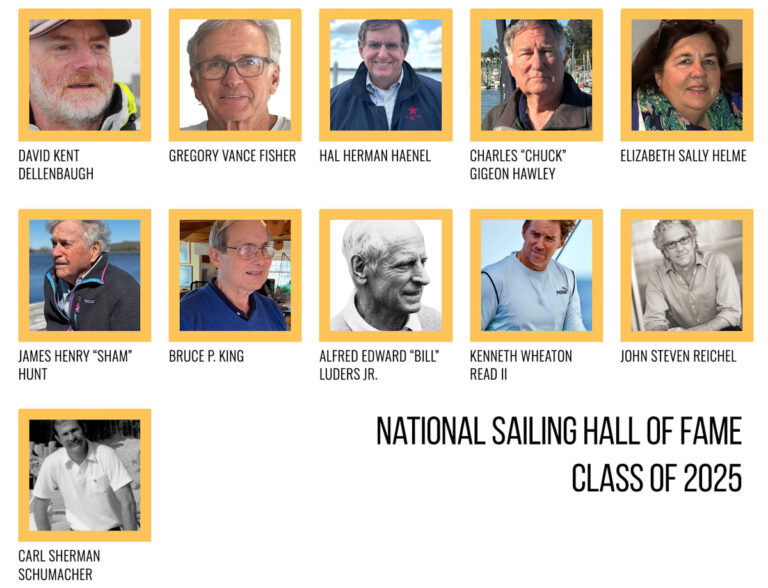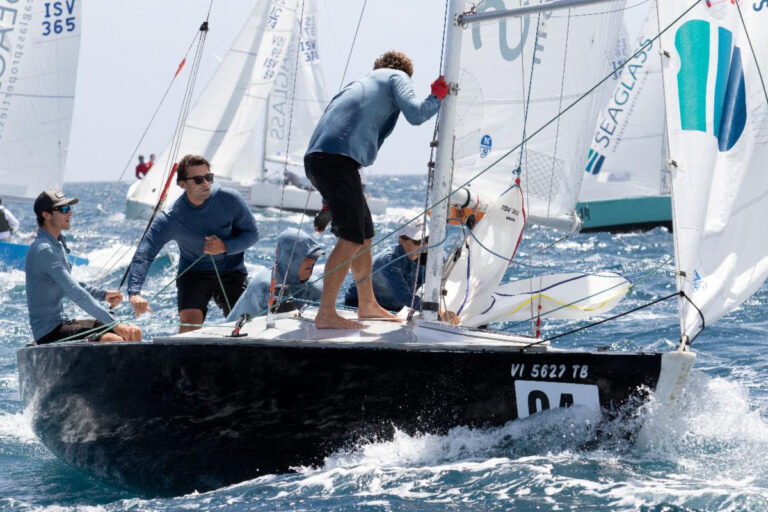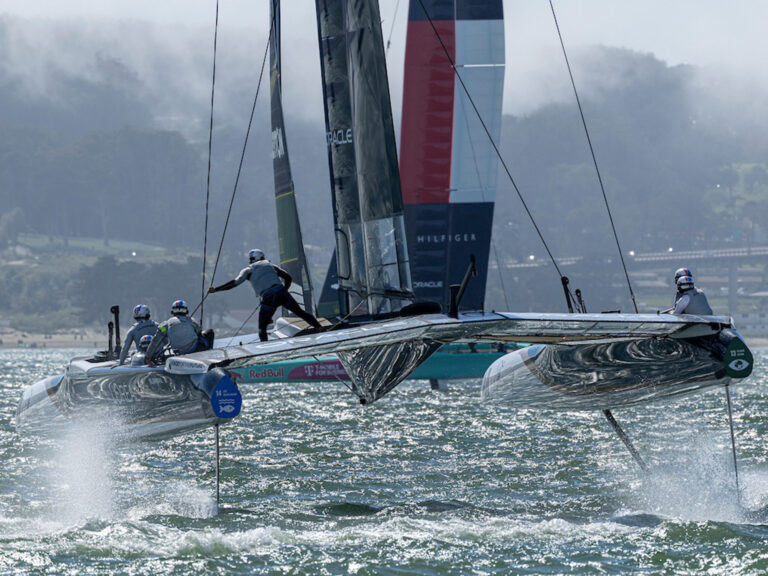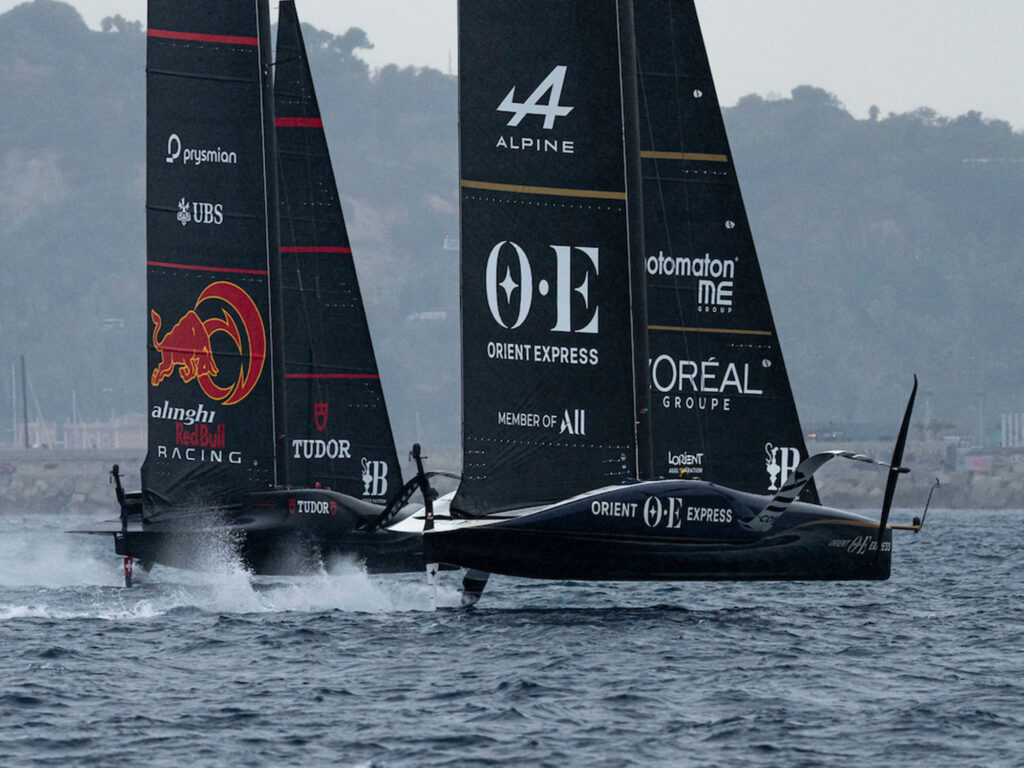
While it’s impossible to predict the outcome and the next Defender, what I do expect is close racing within a boundary racecourse through choppy waters. The sailors will be confronted with shifty and puffy winds off Barcelona’s waterfront, which will add to the complexity of each day’s race. Every race will be hard-earned, especially when considering that the new generation of AC75s will be closer in speed than we witnessed in the Cup match of Auckland in 2021. The race-winning premium will be on tactical precision.
All six teams have spent three years preparing for a relatively short set of trials to select the challenger to face the defending team from New Zealand. The foiling 75-foot monohulls are very different than most raceboats, and yet, the tactics will be familiar to sailors.
Terry Hutchinson, president of Sailing Operations and skipper of American Magic, explains the challenge that Cup sailors will face: “In 15 knots of breeze, we have almost 60 knots of apparent wind coming across the deck. There’s a lot of coordination that takes place between the helmsmen, the cyclors who are creating the power in the boat, and the flight controller and trimmer.”
Getting off the starting line with a slim advantage is perhaps more important than ever: “In the last Cup,” Hutchinson says, “71 percent of the races were won from the first cross, and 92 percent of the races were won if you led at the first mark.”
American Magic’s coach, Tom Burnham, says that his sailors practice a lot in the simulator in addition to their time on the water. “We look at the patterns of other teams. There’s a confined starting box, so there is not much space, so in light air, they are just trying to stay up on the foil. They don’t have a lot of room to go high and slow to kill time, which adds another dimension. The first cross is super important, and as we saw in 2021, New Zealand learned not to engage too much in the prestarts.”
The starting sequence is only 2 minutes. The port-tack boat enters the starting box 10 seconds ahead of the starboard-tack boat. They don’t want dial-ups because of the risk factor of high closing speeds and the risk of being forced off the foil. Dave Perry, one of America’s most knowledgeable Racing Rules experts and a student of tactical theory, explains: “The lead boat gets to decide when to maneuver back toward the line. The trailing boat can turn in front or sail past and push from behind after making their turn.
“Being on the right is powerful, just like a normal keelboat,” he adds. “So, if you are the leeward boat, you want to be close to the windward boat so that they can’t build speed. We won’t see many split starts because there just really isn’t any time. Once the boat crosses the starting line, it is a sprint to the portside boundary. The rules give the leeward boat the right to tack and sail out its proper course. The other boat must anticipate that, so they tack under them.”
Hutchinson explains the next tactical conundrum: “If you don’t win the first cross, you must make sure you have the mindset of keeping the race close. You don’t want to make a second mistake, which could be making an extra maneuver or splitting at the bottom [gate].”
Burnham adds: “The boats are becoming more maneuverable, so we’re going to see more classic match racing, and we might even see some circling. The boatspeed differential is big, and we may see more chances of [an overlap] or rolling over the top and switching from pushing the leading boat to taking the lead.”
Hutchinson says that it’s more efficient to try to sail from one boundary to the other to avoid extra maneuvers. From his calculations, an AC75 loses about two boatlengths when going through a tack (about 5 seconds). Each extra tack is costly, and if a boat sails outside the course boundary, the umpires will issue a penalty. If the boat doesn’t promptly sail back within the boundary line, a more substantial penalty will be added.
In light winds and choppy water, getting back on the foil is extremely costly. A helmsman must steer a course that allows the boat to accelerate enough to take off, even if it means continuing to sail outside the boundary. In this case, it is likely that the boat will lose the race.
“Because of the way the boundaries are and how you work your way up the ladder rung, the bottom part of the beat is not the most critical part,” Hutchinson continues. “Getting control of the race in the last 35 percent of the beat is the most critical. A lot of times, the left-hand boat is dipping the starboard boat, gaining the starboard advantage all the way to the starboard tack layline and inside the boundary. You want the right-hand advantage at the top mark.”
In traditional match racing, a leading boat can use its wind shadow to slow a trailing boat, and downwind, the trailing boat can use its wind shadow to slow a leading boat. Burnham says that the wind shadow of the AC75 is much narrower, but it does extend far, especially in light air. “If you round the top mark and turn down too early, you’ll sail through your own wind shadow. If another boat tacks on your wind, you can bear off a few degrees, accelerate and go 3 knots faster, and sail through to get clear air. You can live to leeward easily.”
When sailing downwind at high speed, however, the apparent-wind angle is so far forward that there is no chance of blanketing the wind of the leading boat. The best hope when trailing is picking a favorable windshift or sailing faster.
The leading boat has the advantage of rounding the most favorable gate and side of the racecourse. The trailing boat is then usually forced to follow or round the opposite gate and be out of phase. It’s difficult to stay in phase in these fast-turning boats. The races include three laps around the course, so the sailors will have time to observe the trends in wind strength and direction. Keeping a race close, therefore, puts pressure on the leading boat.
The pressure and high-speed encounters that the America’s Cup sailors face, however, are something they are now used to. “It’s second-nature,” Hutchinson says. “The helmsman is thinking about speed. The flight control is thinking about ride height. The trimmer is making sure the setup of the mainsail and mast rotation are in the proper position. The cyclors are making sure there is a high percentage of power available.”
On-water umpires were added to America’s Cup racing in 1992, and the practice has evolved over the years—to the point that the umpires now make their calls from ashore by watching the action on computers. Penalties are applied by requiring the offending boat to slow down for a specific period. The GPS-recorded actions of the racing boats has gotten impressively precise. For the sailors, there is no opportunity to argue with an umpire or wave a flag—a warning light will flash on the boat until the penalty is cleared.
From a distance, the racing will appear mechanical and precise, and it will be hard to detect the emotions and facial expressions of the sailors tucked low in the hull and wearing goggles and helmets. Even though we cannot see the stress they’re under during a close match race, Coach Burnham assures us that there will be plenty of emotions and stress to come. How can there not be with the stakes so high? Hutchinson, now competing in his sixth America’s Cup campaign, sums up the experience succinctly: “When you see a boat win a race, that is going to be a very well-deserved win.”

